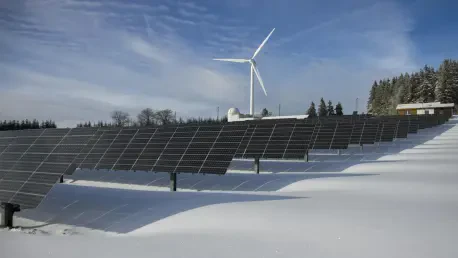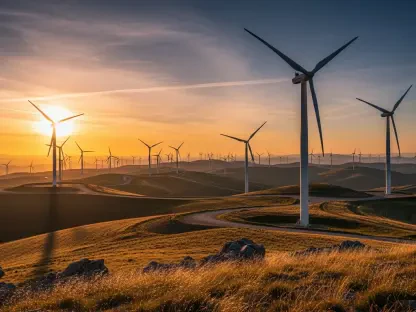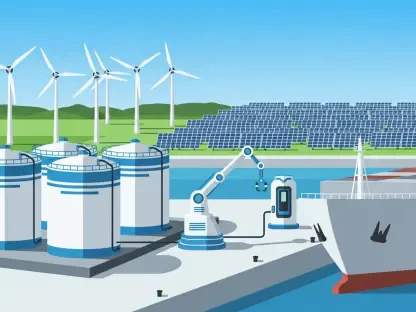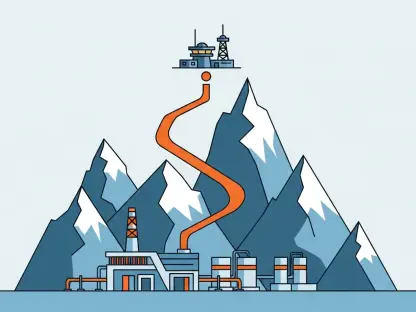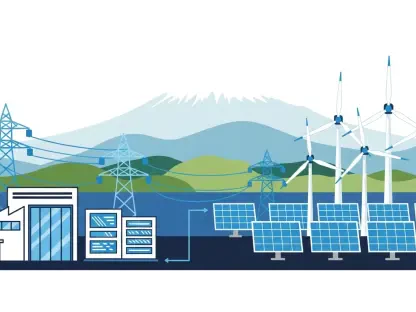Introduction to a Solar Powerhouse in Turbulent Times
In the rapidly evolving landscape of renewable energy, Waaree Energies stands as a titan among solar module manufacturers, navigating both unprecedented growth and significant hurdles in the United States, the world’s largest economy. As demand for clean energy surges across sectors like data centers and transportation, the Indian company finds itself at a crossroads, balancing ambitious expansion plans with a trade investigation by U.S. customs officials over allegations of tariff evasion. This scenario underscores a broader tension in the solar industry: how to capitalize on booming markets while adhering to stringent international trade regulations. The stakes are high, with the U.S. market accounting for over half of Waaree’s export revenue, making its strategic moves a focal point for industry observers.
The renewable energy sector, particularly solar, is witnessing a transformative phase, driven by global commitments to sustainability and net-zero targets. Governments and corporations alike are investing heavily in green infrastructure, positioning solar power as a cornerstone of future energy systems. Amid this backdrop, Waaree Energies’ journey offers a compelling case study of resilience and adaptability, as it seeks to solidify its foothold in a critical market despite regulatory scrutiny. This report delves into the company’s strategic initiatives, the challenges posed by trade policies, and the broader implications for the solar industry.
Overview of Waaree Energies and the Solar Industry Landscape
Waaree Energies’ Position in the Global Market
Waaree Energies has cemented its status as India’s leading solar module manufacturer, playing a pivotal role in the global renewable energy ecosystem. With a robust manufacturing capacity of 16.1 gigawatts (GW) in India and an additional 2.6 GW in the U.S., the company stands as a significant contributor to solar adoption worldwide. Its focus on exports, particularly to high-demand regions, underscores its ambition to be a dominant player on the international stage, supplying cutting-edge solar solutions to meet growing energy needs.
Beyond sheer capacity, Waaree’s strategic emphasis on innovation and scalability sets it apart from competitors. The company has built a reputation for delivering high-quality solar modules tailored to diverse applications, from industrial to residential projects. This adaptability, coupled with a strong supply chain network, positions Waaree as a trusted partner in the transition to sustainable energy, especially in markets with stringent quality and performance standards.
State of the Solar Industry and U.S. Market Importance
The solar industry is experiencing a remarkable upswing, fueled by technological advancements and increasing policy support for renewables across the globe. In the U.S., the push for energy independence and decarbonization has created fertile ground for solar adoption, with the market emerging as a linchpin for industry growth. Sectors such as data centers, which require immense power for operations, alongside manufacturing and transportation, are driving unprecedented demand for reliable and efficient solar solutions.
The significance of the U.S. market cannot be overstated, as it represents not only a hub of economic activity but also a testing ground for regulatory frameworks that shape global trade in renewables. Federal incentives and state-level mandates have accelerated solar deployments, creating opportunities for international manufacturers like Waaree to fill supply gaps. However, navigating this landscape requires agility, as geopolitical tensions and trade policies often introduce complexities that test the resilience of even the most established players.
Waaree’s Strategic Expansion in the U.S. Market
Key Growth Initiatives and Investments
To capitalize on the burgeoning U.S. market, Waaree Energies has embarked on an aggressive expansion strategy, marked by significant investments and acquisitions. A notable move includes the acquisition of a 1-gigawatt module manufacturing line from Meyer Burger in Arizona, enhancing its production capabilities on American soil. Additionally, the company is upgrading its Houston, Texas facility, doubling its capacity from 1.6 GW to 3.2 GW to meet rising demand.
Looking ahead, Waaree has outlined plans to further bolster its manufacturing footprint by adding 10 GW each of solar cell and ingot-wafer capacity between the current year and 2027. These initiatives reflect a long-term commitment to vertical integration, ensuring control over critical components of the solar supply chain. Such steps not only strengthen Waaree’s operational efficiency but also align with U.S. policies favoring domestic production of renewable energy technologies.
Export Performance and Revenue Insights
Waaree’s financial performance in the export arena highlights its deep reliance on the U.S. market, which contributes over 50% of its export revenue. The company’s order book, valued at approximately 470 billion rupees ($5.4 billion), showcases its strong market presence, with 60% of orders tied to international shipments. This heavy dependence on exports underscores the strategic importance of maintaining robust operations in key regions like the U.S.
The revenue figures also point to Waaree’s ability to secure large-scale contracts, reflecting trust in its product reliability and delivery timelines. By prioritizing customer needs in high-growth sectors, the company has carved out a substantial share of the market, positioning itself as a preferred supplier for major projects. This export-driven model, while lucrative, necessitates careful navigation of international trade dynamics to sustain profitability.
Navigating Trade Probe Challenges in the U.S.
Details of the Ongoing Investigation
A significant challenge facing Waaree Energies is a trade probe initiated by U.S. customs officials, centered on allegations of mislabeling Chinese-made solar cells as Indian-made to evade tariffs. This investigation has cast a spotlight on the company’s supply chain practices, raising questions about compliance with strict import regulations. Waaree has categorically denied these claims, asserting its adherence to all applicable trade laws.
According to CEO Amit Paithankar, the investigation remains in its preliminary stages, with no substantial impact on current shipments to the U.S. market. The company views this as a procedural inquiry rather than a definitive judgment, maintaining confidence in its operational transparency. Nevertheless, the probe serves as a reminder of the complexities inherent in global trade, especially for industries subject to geopolitical sensitivities.
Waaree’s Response and Risk Mitigation
In response to the allegations, Waaree Energies has pledged full cooperation with U.S. authorities, providing detailed documentation to substantiate its claims of compliance. Internal assessments conducted by the company suggest that any potential fallout from the investigation will be limited, allowing operations to continue with minimal disruption. This proactive stance aims to reassure stakeholders of Waaree’s commitment to ethical business practices.
Beyond immediate cooperation, Waaree is focusing on risk mitigation by strengthening its supply chain transparency and ensuring traceability of its products. By investing in robust internal controls, the company seeks to preempt future regulatory challenges while maintaining customer confidence. These efforts reflect a broader strategy to balance growth ambitions with the need for stringent oversight in international markets.
Regulatory Environment and Compliance in the Solar Sector
U.S. Trade Policies and Tariffs on Solar Imports
The regulatory landscape in the U.S. presents a complex web of tariffs and trade policies that significantly influence the solar import market. Tariffs on solar products, particularly those originating from China, have been a longstanding tool to protect domestic manufacturers, often extending scrutiny to countries like India due to supply chain overlaps. These policies create a challenging environment for international players seeking to penetrate the U.S. market.
For solar manufacturers, understanding and navigating these regulations is crucial to avoid costly penalties or shipment delays. The broader implications of such policies include potential shifts in global supply chains, as companies may need to localize production to circumvent trade barriers. This dynamic adds a layer of uncertainty to strategic planning, requiring firms to remain agile in response to policy changes.
Waaree’s Commitment to Compliance
Waaree Energies has made compliance a cornerstone of its operational ethos, prioritizing adherence to U.S. trade regulations to safeguard its market position. By fostering a strong relationship with regulatory bodies, the company aims to ensure smooth operations even amid heightened scrutiny. This dedication to compliance is evident in its proactive submission of documentation during the ongoing probe.
Moreover, Waaree’s focus on regulatory alignment shapes its broader business strategies, from sourcing decisions to manufacturing processes. By embedding compliance into its core operations, the company not only mitigates risks but also enhances its reputation as a reliable partner in the solar industry. This approach serves as a model for other international manufacturers facing similar regulatory challenges.
Future Outlook for Waaree Energies and the Solar Industry
Growth Opportunities in Renewable Energy
The U.S. market offers a wealth of opportunities for Waaree Energies, particularly in emerging areas such as cell production and battery energy storage systems. As demand for integrated energy solutions grows, the company is well-positioned to diversify its portfolio and capture new revenue streams. This aligns with global trends toward sustainable energy, where innovation in storage and efficiency is becoming a competitive edge.
Additionally, Waaree’s established presence in the U.S. provides a platform to explore partnerships with local firms and technology providers. Such collaborations could accelerate the development of next-generation solar products tailored to American energy needs. Leveraging these opportunities will be key to maintaining Waaree’s growth trajectory in a rapidly evolving industry.
Potential Disruptors and Long-Term Vision
Despite promising prospects, Waaree must remain vigilant of potential disruptors, including tighter regulatory frameworks or intensified trade scrutiny that could impede market access. Fluctuations in policy or geopolitical tensions may necessitate adjustments to its operational model, requiring strategic foresight to stay ahead of challenges. These external factors highlight the importance of flexibility in long-term planning.
Waaree’s vision for the future centers on innovation and capacity expansion as drivers of sustained success. By investing in research and development, alongside ambitious manufacturing targets, the company aims to solidify its leadership in the solar sector. This forward-thinking approach positions Waaree to not only weather current uncertainties but also shape the future of renewable energy on a global scale.
Reflecting on Challenges and Charting the Next Steps
Looking back, Waaree Energies has demonstrated remarkable tenacity in addressing trade probe challenges while pursuing aggressive expansion in the U.S. market. The company’s strategic investments and strong export performance stand as testaments to its resilience amid regulatory headwinds. Its cooperation with authorities during the investigation further highlights a commitment to transparency that bolsters stakeholder trust.
Moving forward, Waaree needs to prioritize diversification of its supply chain to reduce dependency on any single market or region, mitigating risks associated with trade disputes. Exploring technological advancements, such as advanced energy storage solutions, offers a pathway to differentiate its offerings and capture emerging demand. Additionally, forging strategic alliances with U.S.-based entities could enhance market penetration while aligning with local policy priorities, ensuring sustained growth in a competitive landscape.
